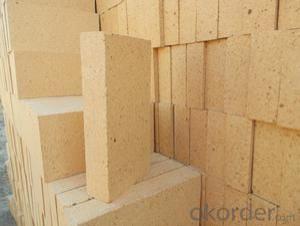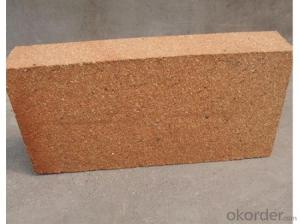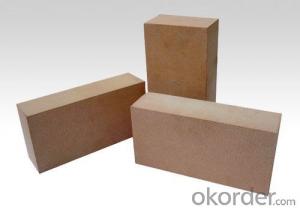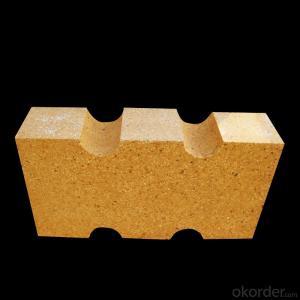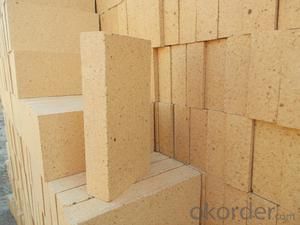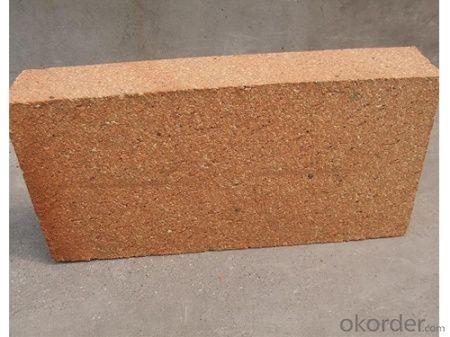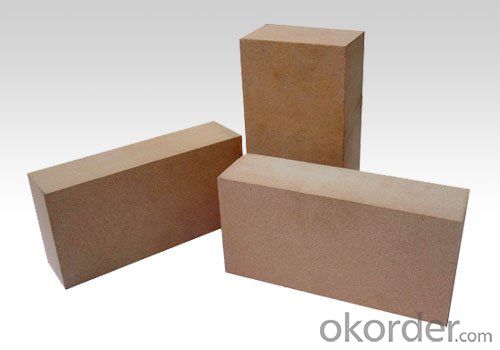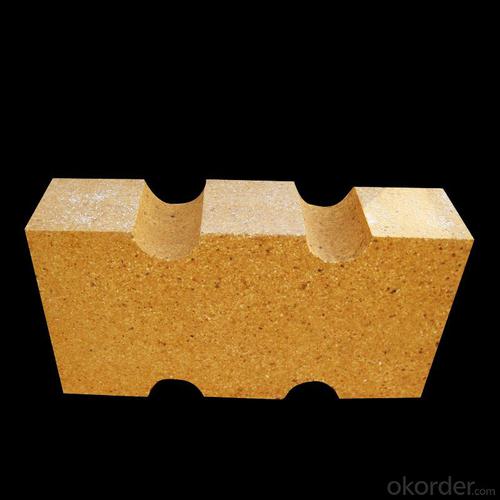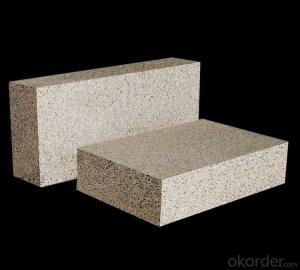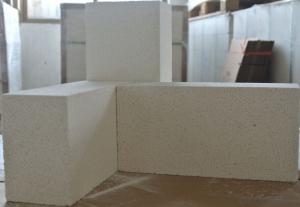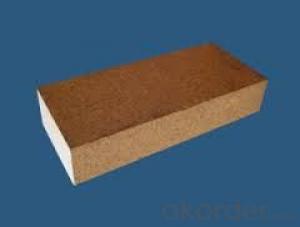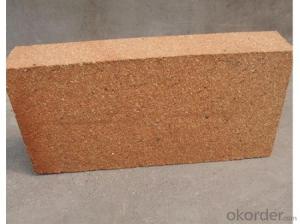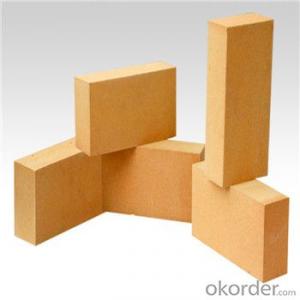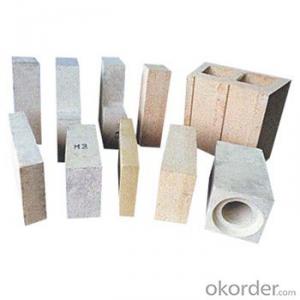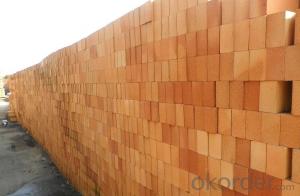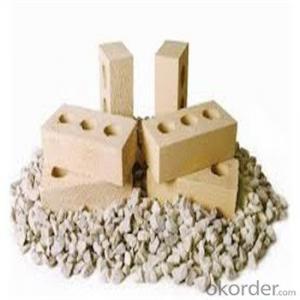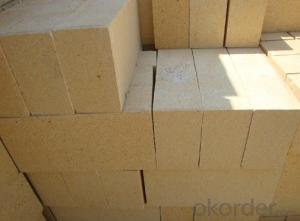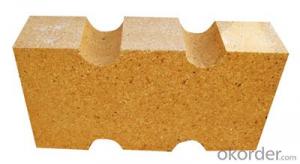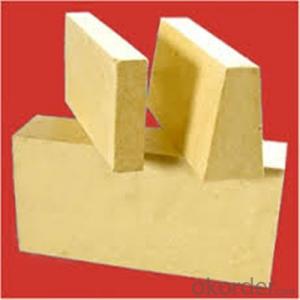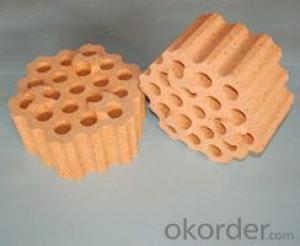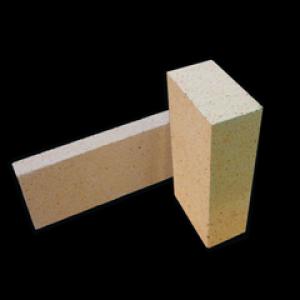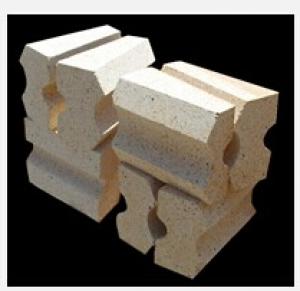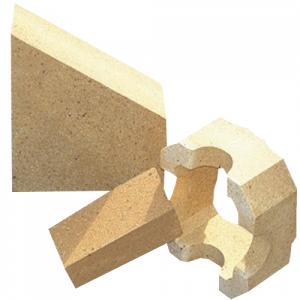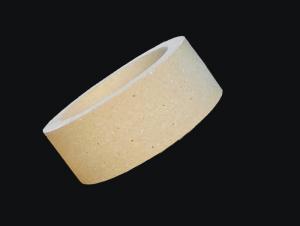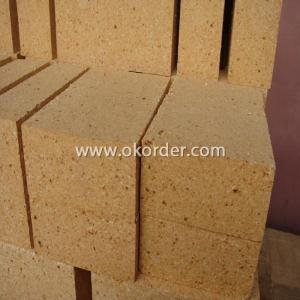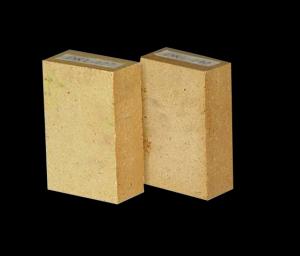Fireclay Brick - Low Creep for Hot Blast Stove/Oven
- Loading Port:
- China main port
- Payment Terms:
- TT OR LC
- Min Order Qty:
- 1 m.t.
- Supply Capability:
- 1000 m.t./month
OKorder Service Pledge
OKorder Financial Service
You Might Also Like
Low Creep Fireclay Bricks for Hot Blast Stove is a kind of insulation material adopting organic matter as ignition loss substance in order to increase the porosity of refractory, which has such advantages as high porosity, small volume density, good insulation effect, high mechanical intensity, small thermal conductivity and long service life. For various industrial kilns & furnaces, it is a kind of essential refractory for energy saving and temperature preservation.
This series of Low Creep Fireclay Bricks for Hot Blast Stove are made of selected high alumina bauxite, kaolin clay, hollow microsphere as the mian material.By shaping at high pressure and sintering at high temperature
Product Applications:
1. Furances of glass,coke oven,electric and so on
2.Furnaces of metallurgy industry, heat treatment furnace
3. Furnaces of chemical industry and construction industry.
4. Furnace of incineration of garbage, recirculating fluidized bed furnace
5. Standard sizing: 230 x 114 x 65 or 75 or 25 mm others up to the client
Main Product Features:
1. Low porosity,High bulk density.
2. High Cold Crushing strength.
3. High refractoriness under load.
4. High mechanical strength.
5. Good resistance to erosion.
Product Specifications:
1.With 55% Al2O3 min;
2. Refractoriness: 1750C min;
3.For steelmaking furnaces;
4.ISO 9001 Certificate;
5.Custom shape;
Technical data:
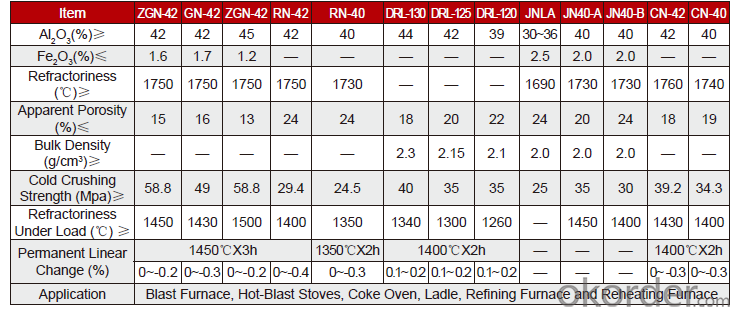
Q1 What’s the transport method?
A1 FCL delivery goods with wooden pallet or wooden case by sea; If LCL delivery, must with wooden case; Sometimes need open top, flat rack or bulk cargo.
Q2 What’s the required payment term?
A2 Generally 30% TT as the prepayment, 70% TT before delivery. If need, 100% Irrevocable Letter of Credit or negotiation.
Q3 Which country are our products exported to?
A3 Apart from entire Chinese market, the US, Russia, Japan, Korea, Australia and some Southeast Asian Nations.
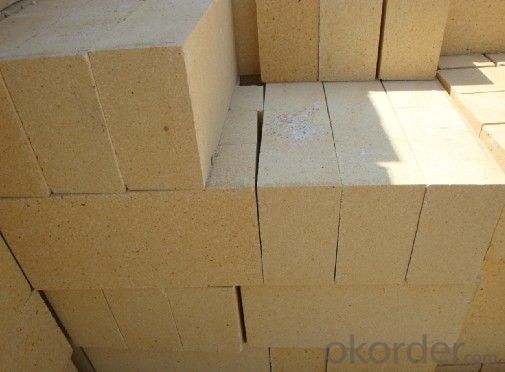
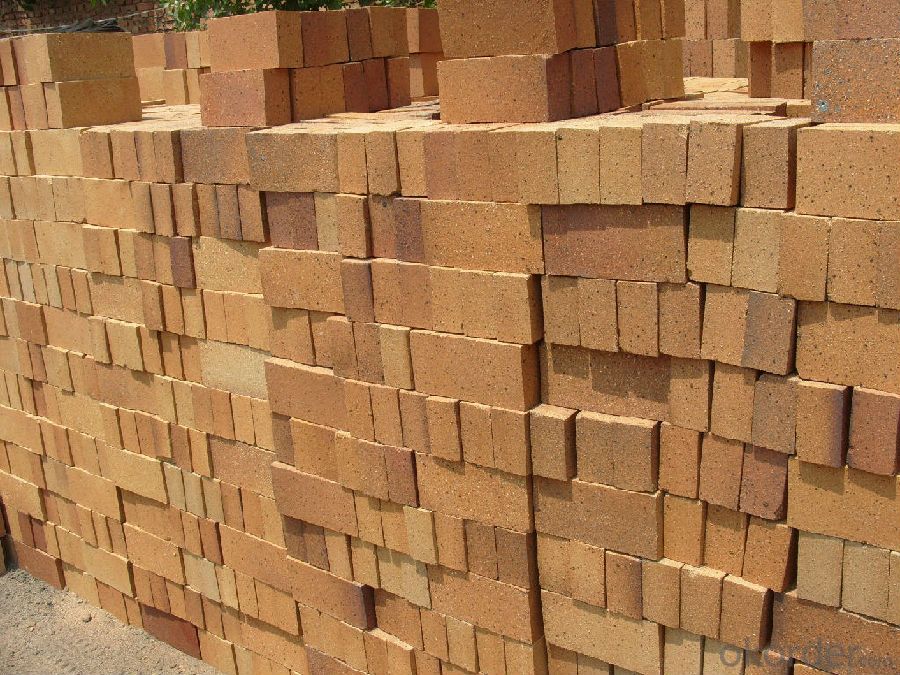
- Q: how much fireclay is needed for 10000 refractory bricks?
- The amount of mud used for T-3 refractory brick is 0.3KG. if the tiler is skillful, the furnace should have joint of 2mm.
- Q: Whether the cement kiln refractory bricks belong to hazardous waste or not?
- No, there is no harmful gas produced, and it will not pollute the ground.
- Q: How to test the various components of the refractory brick?
- If you want to know the chemical?compound components, you can do the analysis of meteorological chromatography, and then testing, if you just want to detect contents of elements, you can do a XRF, but you should smash, grind and homogenize the refractory bricks. The specific operation process is not convenient to describe in detail, that is, X ray diffraction, through X ray fluorescence analysis, you can know that the elements and contents contained in it, if you want to understand its internal structure, you can also do a XRD
- Q: What to do if refractory bricks saltpeter when they are used outdoor
- Efflorescence is usually dialysised from brickwork joints, dealing with the gap is ok These white substaince inside the pan tile: Cement efflorescence efflorescence is wow cake section from light leather intestinal common disease inumiya Hua building surface, according to their different causes and manifestations, there is pan cream, white, whitening, cream, on the walls and decorative surface erosion and other names, is the change of soluble saline alkali soil, adobe, brick, cement, mortar, concrete, masonry, ceramic tile, paint and other building materials with temperature, humidity and other external environment, in a water absorption, water transfer, water evaporation process with physical and chemical changes of the original building material damage disease phenomenon, erosion degree also has the very big difference there is a common, get damp, foaming, powder, drum, hollowing, cracking, spalling, mildew and crystallization phenomenon. Cement efflorescence may have some relationship with the quality of the cement, sand, water, air, temperature, humidity, it is a common fault in building. Use cement to do the pebble shape, it also prones to the above problems: A layer of white stuff on the surface. Terms of settlement: Scrape the dust in brickwork joint, pointing again. Use special pointing agents, more resistant to corrosion, not easy to efflorescence.
- Q: Which is better for tunnel kiln suspended ceiling, refractory brick or ceramic fiber module ?
- Refractory bricks is better.
- Q: What are the disadvantages of sintered clay bricks?
- Advantages: brick is the traditional wall materials, has high intensity and durability, but also because of its porous and has the advantages of heat insulation, sound insulation and absorption, therefore suitable for building envelope, interior walls, exterior walls, columns, arches, chimney, channel and other structures have been widely used in masonry the building, is also available in mid proper or steel wire reinforced masonry concrete structure to replace the post and lintel.
- Q: How to prevent high alumina refractory brick from producing crack when reproduce high alumina refractory brick?
- 1-1, on the 1 in order to prevent the emergence of crack in the production of high alumina refractory brick. 2 is appropriate, the water absorption rate of the tube mill should be controlled below 6%, the excess air coefficient controlled between level 1 and 2. The water absorption rate of clinker of bauxite with high alumina controlled under 4%-5%, making the high aluminum refractory brick burning in a smoothly and steadily weak oxidation atmosphere, and should be adjusted by thermotechnic
- Q: The application of wasted refractory bricks
- Refine waste copper, and waste refractory bricks can be used again, shoot two hawks with one arrow
- Q: What is the clay used to make the refractory brick?
- Lining brick of teeming ladle; refractory clay used in building materials industry to produce high alumina bricks for cement kilns and glass furnaces, as well as anti sliding, high alumina lining bricks and high alumina refractory clay. The hard clay in refractory clay is used for making blast furnace refractory material, which is used in agriculture as a fertilizer promoting agent and, and electron. High alumina clay is also used in the oil well, generally does not disperse in water. In metallurgy, accounts for 2/3 of abrasive products, and so on. Hard clay and semi hard clay can be used to manufacture daily-use ceramics. High alumina clay after calcination, which has high temperature resistance! Refractory clay refers to the degree of fire resistance is greater than 1580, the hardness and proportion is relatively big, the refractoriness is good. They except has relatively high refractoriness. Such as aluminum sulfate, its dosage accounts about 70% of all the refractory materials;
- Q: What is the raw material for the production of refractory bricks?
- Refractory raw material, sodium silicate as a binder, and lightweight aggregate, magnesium sand, magnesia calcium. Magnesium Oxide, bauxite, and then lightly burn: Hard refractory clinker
Send your message to us
Fireclay Brick - Low Creep for Hot Blast Stove/Oven
- Loading Port:
- China main port
- Payment Terms:
- TT OR LC
- Min Order Qty:
- 1 m.t.
- Supply Capability:
- 1000 m.t./month
OKorder Service Pledge
OKorder Financial Service
Similar products
Hot products
Hot Searches
Related keywords
